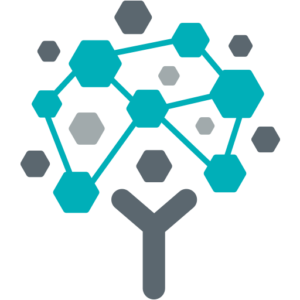Reading Time: 3 minutes
At its core, Google and other major software companies use data to inform and influence your online experience and deliver tailored personal results. Similarly, nonprofit organizations can make the most significant organizational impact when using data at the center of their decision-making process.
Consider building your nonprofit’s data strategy around essential constituent and engagement data at various touchpoints of their respective journeys. Once you’ve identified your mission and objectives and the metrics that will serve as your key performance indicators (KPIs), you can aggregate and analyze your financial data to create informed fundraising, outreach, programmatic initiative, and communications-related decisions.
Using data to influence your nonprofit’s operations helps nonprofit leaders, and board members, make decisions that will create the most impact based on historical evidence and trends. A Harvard Business Review report noted that 70% of organizations that used an analytics ecosystem reported increased financial performance and productivity, resulting in decreased operational risk and faster decision-making.
Today’s nonprofits can use data in ways that weren’t possible even just 10 years ago, and your nonprofit likely already has significant levels of raw data. However, how do you know if what you’re collecting is useful, and how do you turn that raw data into something that can be used to execute a campaign on? How do you know which programs are operating at a profit or a loss? Can you forecast which programs to invest in?
That’s where nonprofits can be their own Google and use data collection and analysis software to cut through the noise and create actionable insights to make more informed operational decisions.
Making Data Collection Easier
Google knows what its end-users want to accomplish and presents results that reflect it. For nonprofits, using a data-driven mindset means defining and understanding your mission and the steps needed to achieve it.
Your nonprofit needs to collect data and analyze it. Having a clearly defined mission defines the kind of metrics your nonprofit needs to create key performance indicators (KPIs). These KPIs are key to determining mission impact, but how do you know the data you’re collecting is telling the right story? Collaborate with stakeholders from Development, HR, IT or other relevant departments to home in what your organization’s data strategy is and the data points you’ll collect to measure and drive results.
Using a technological solution is the easiest way to document your progress in accomplishing your mission. These solutions offer real-time insights from customizable dashboards that allow your nonprofit to make decisions and inform strategic and tactical moves. A nonprofit’s tech stack directly correlates to how efficiently it can accomplish its mission at the micro and macro levels.
Un-crowding Your Tech Stack
According to MIP’s 2022 Nonprofit Research Study of 400 nonprofit professionals, nearly half of respondents utilized six different digital tools to do their jobs, with 23% relying on eight digital tools. The complexity of these tech stacks led to reduced efficiency, with 78% saying they spend at least a quarter of their workday managing multiple systems.
If your nonprofit’s tech stack isn’t meeting your organizational needs or has overlapping functionalities, you’re not utilizing effective data. You may find that accounting solutions developed specifically for small businesses (like Quickbooks, Excel, or other basic accounting tools) are not robust enough to handle the demands of nonprofit accounting. Using a true fund accounting solution allows your finance team to access many different data sources—like fundraising, accounting, budgets, audit trails, HR, and many others—to see your organization’s total operational health, track your operational data and create reports to tell your nonprofit’s story.
By using data to influence operational plans, identifying and implementing the proper accounting tools to use allows your finance team to track current operational health and forecast what’s ahead. When your team follows a broader financial strategic direction, you can budget and project for future expenses instead of reacting to circumstances as they develop—proper financial planning results in solid ROI.
Reports That Tell Your Story
When it comes to executing and reporting on your mission, data is once again key. With a fund accounting solution that keeps your nonprofit organization in mind, presenting complete and digestible data to leadership, your board, and external stakeholders becomes easy. Fund accounting solutions allow your organization to filter, organize, and deliver this data with cutting-edge reporting capabilities that enable you to quickly compile and pull accurate reports, which can then be shared and used for analysis, status updates, documentation, and to gain buy-in on actionable executables.
When you have the right data, and tell the right stories, you’re able to accomplish your mission more effectively. Your nonprofit can be the next Google for its stakeholders and use a data-driven process to accomplish its mission and inform its strategic plan. Invest today and realize sustained success tomorrow.
If you’re looking for data on how the nonprofit sector is performing and how your organization compares to others, download the 2022 Nonprofit Research Study to gain insights from 400 nonprofit professionals, ranging from executive leadership to staff members, on recent trends, challenges, and goals on the industry.
Share this post





